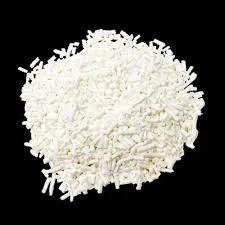
Exploring the Differences and Similarities Between 951 and 950 Sweeteners for Healthier Choices
The Sweet Debate 951 and 950 Sweeteners
In the modern era, where health consciousness is at an all-time high, the use of sweeteners in our food and beverages has surged tremendously. Among these, two particularly notable sweeteners are 951 and 950. Both of these substances have stirred debates regarding their safety, effectiveness, and overall impact on health. Understanding these sweeteners is crucial for consumers who seek healthier alternatives to sugar.
The Sweet Debate 951 and 950 Sweeteners
On the other hand, sweetener 950, or acesulfame potassium (Ace-K), presents a different profile. It is often used in combination with other sweeteners to enhance sweetness and mask aftertastes. Acesulfame potassium is calorie-free, heat-stable, and approximately 200 times sweeter than sucrose. It is frequently found in baked goods, chewing gum, and kitchen staples, making it a versatile ingredient. Regulatory bodies have deemed Ace-K safe for consumption, yet some studies suggest a potential link to adverse health effects, raising questions among consumers about its long-term impact.
951 and 950 sweeteners

A crucial aspect of the discussion surrounding sweeteners 951 and 950 is their role in weight management and diabetes control. Many people turn to these artificial sweeteners as a way to reduce calorie intake without sacrificing sweetness. Studies have shown promising effects of both sweeteners in aiding weight loss and glycemic control; however, the results are not universally agreed upon. Some researchers argue that while they may aid in short-term weight reduction, long-term use may lead to increased cravings for sweet foods, thereby counteracting their intended benefits.
Moreover, the safety of these sweeteners is often debated in the public sphere, with countless anecdotes and concerns circulating on social media platforms. The balance between scientific evidence and consumer perception makes the discussion complex. Misinformation can lead to fear, resulting in people avoiding these sweeteners altogether, despite their official safety status. It is essential for consumers to rely on credible sources and scientific studies when making dietary choices.
In conclusion, the sweeteners 951 (aspartame) and 950 (acesulfame potassium) are prominent figures in the world of artificial sweeteners. They offer a calorie-free alternative to sugar, appealing to health-conscious consumers. While regulatory agencies have affirmed their safety, ongoing research and consumer experiences continue to shape the conversation around their use. As the landscape of nutrition evolves, it is vital for individuals to stay informed and make choices that align with their health goals. Understanding these sweeteners will empower consumers to navigate the often confusing world of artificial additives, ultimately contributing to healthier dietary habits and overall well-being.
-
The Safety Challenges of Ammonium Nitrate FertilizerNewsJun.26,2025
-
The Critical Role of Mining ChemicalsNewsJun.26,2025
-
Shelf Life of Glacial Acetic Acid Food GradeNewsJun.26,2025
-
Enhancing PVC Longevity with 1,2,3-Benzotriazole InnovationsNewsJun.26,2025
-
China’s Dominance in Food Additive ProductionNewsJun.26,2025
-
Can Aluminum Hydroxide Replace More Toxic Alternatives?NewsJun.26,2025
-
PE and PP Plastics with Benzotriazole AdditivesNewsJun.12,2025
Hebei Tenger Chemical Technology Co., Ltd. focuses on the chemical industry and is committed to the export service of chemical raw materials.
-

view more DiethanolisopropanolamineIn the ever-growing field of chemical solutions, diethanolisopropanolamine (DEIPA) stands out as a versatile and important compound. Due to its unique chemical structure and properties, DEIPA is of interest to various industries including construction, personal care, and agriculture. -

view more TriisopropanolamineTriisopropanolamine (TIPA) alkanol amine substance, is a kind of alcohol amine compound with amino and alcohol hydroxyl, and because of its molecules contains both amino and hydroxyl. -

view more Tetramethyl Thiuram DisulfideTetramethyl thiuram disulfide, also known as TMTD, is a white to light-yellow powder with a distinct sulfur-like odor. It is soluble in organic solvents such as benzene, acetone, and ethyl acetate, making it highly versatile for use in different formulations. TMTD is known for its excellent vulcanization acceleration properties, which makes it a key ingredient in the production of rubber products. Additionally, it acts as an effective fungicide and bactericide, making it valuable in agricultural applications. Its high purity and stability ensure consistent performance, making it a preferred choice for manufacturers across various industries.











